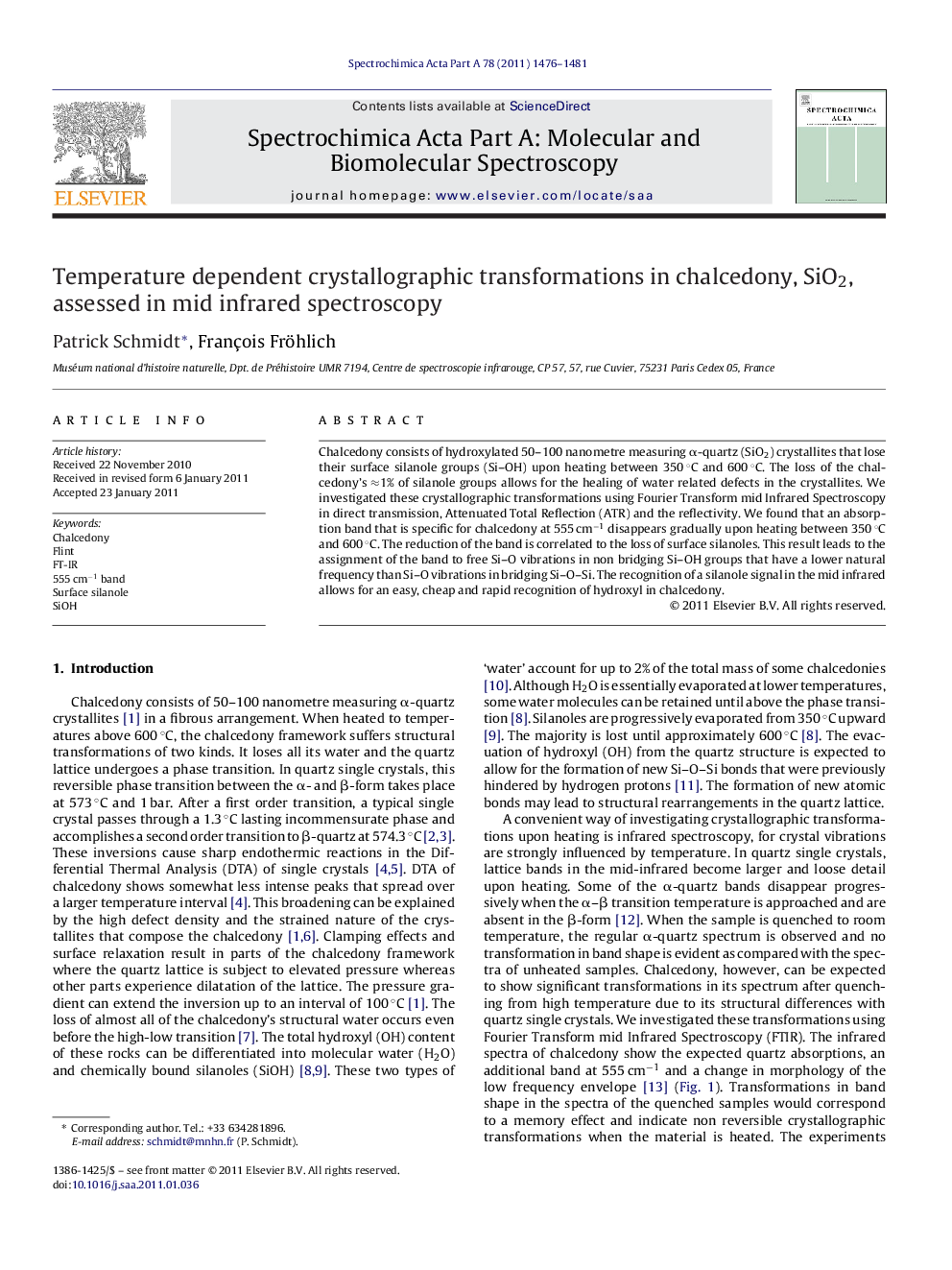| Article ID | Journal | Published Year | Pages | File Type |
|---|---|---|---|---|
| 1236168 | Spectrochimica Acta Part A: Molecular and Biomolecular Spectroscopy | 2011 | 6 Pages |
Chalcedony consists of hydroxylated 50–100 nanometre measuring α-quartz (SiO2) crystallites that lose their surface silanole groups (Si–OH) upon heating between 350 °C and 600 °C. The loss of the chalcedony's ≈1% of silanole groups allows for the healing of water related defects in the crystallites. We investigated these crystallographic transformations using Fourier Transform mid Infrared Spectroscopy in direct transmission, Attenuated Total Reflection (ATR) and the reflectivity. We found that an absorption band that is specific for chalcedony at 555 cm−1 disappears gradually upon heating between 350 °C and 600 °C. The reduction of the band is correlated to the loss of surface silanoles. This result leads to the assignment of the band to free Si–O vibrations in non bridging Si–OH groups that have a lower natural frequency than Si–O vibrations in bridging Si–O–Si. The recognition of a silanole signal in the mid infrared allows for an easy, cheap and rapid recognition of hydroxyl in chalcedony.
Graphical abstractFigure optionsDownload full-size imageDownload as PowerPoint slideResearch highlights► We found that a IR absorption band at 555 cm−1 in chalcedony disappears gradually upon heating between 350 °C and 600 °C. ► The reduction of the band is correlated to the loss of surface silanoles. ► This result leads to the assignment to free Si–O vibrations in non bridging Si–OH groups.
